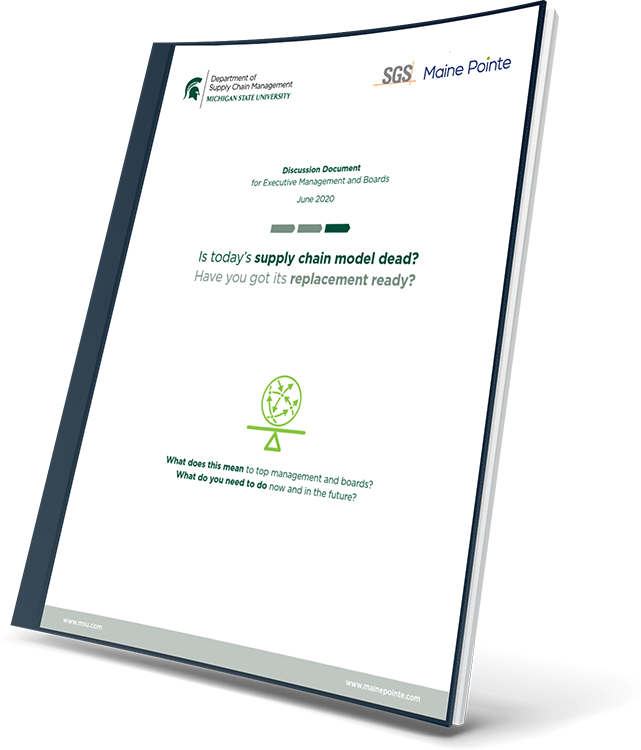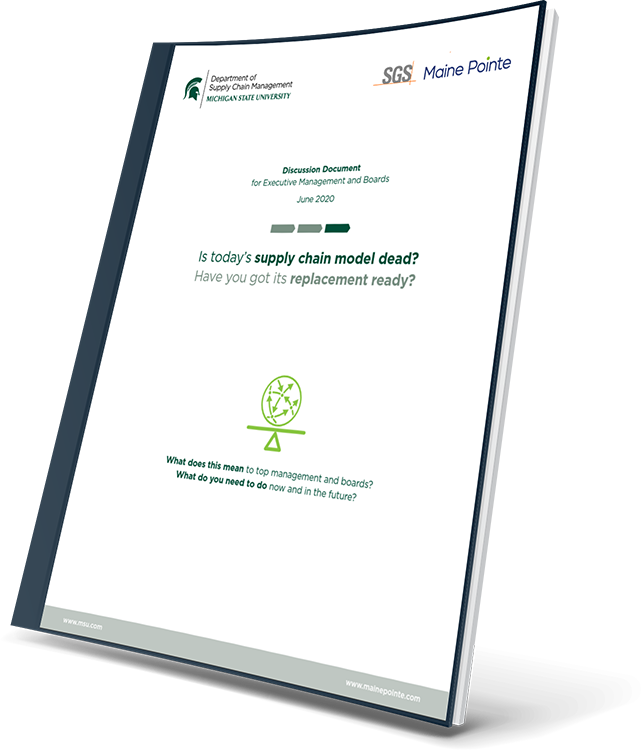
The future of the supply chain
The global pandemic has exposed hidden vulnerabilities in the global supply chain, and companies must now begin a long process of re-evaluating and rebalancing to create a new model.
This executive management and board discussion paper from Maine Pointe and Michigan State University addresses the enormous pressure business leaders are faced with, which includes limiting short-term disruption, supporting mid-term recovery and ensuring greater agility and resilience in the future.
eBook: Is today's supply chain model dead?


What's in this eBook?
Business leaders are under enormous pressure to quickly limit short-term disruption,
support recovery in the mid-term, and ensure greater supply chain agility, resilience and
optimization in the longer term.
The financial crisis of 2007/8 changed and reshaped the financial world. Twelve years on and the pandemic has exposed extreme vulnerability that will lead to fundamental shifts in global supply chains
We lay out the critical issues facing top management and boards today and pose the
questions, “is today’s 50-year-old supply chain model dead?” and, if so, “have you got
a replacement?”
Introduction
In spite of views to the contrary, the supply chain is not really responsible for many of the problems currently attributed to it, such as inability to respond quickly to sudden seismic shifts in demand, empty shelves, increased prices, and concerns over food supply.
Rather, these problems are the result of many factors: interconnectedness (where people and supply move quickly from one area of the world to another), unexpected shifts in demand (who could have expected the 430 percent increases in demand for hand sanitizers?) conflict and competition between governments for shrinking supplies, hoarding/price gouging, and an over-reliance on offshore manufacturing plants and suppliers resulting in products not getting to their intended clients or consumers.
However, the current pandemic has exposed the hidden vulnerabilities of the current dominant supply chain and business model in place.
eBook: Is today's supply chain model dead?

